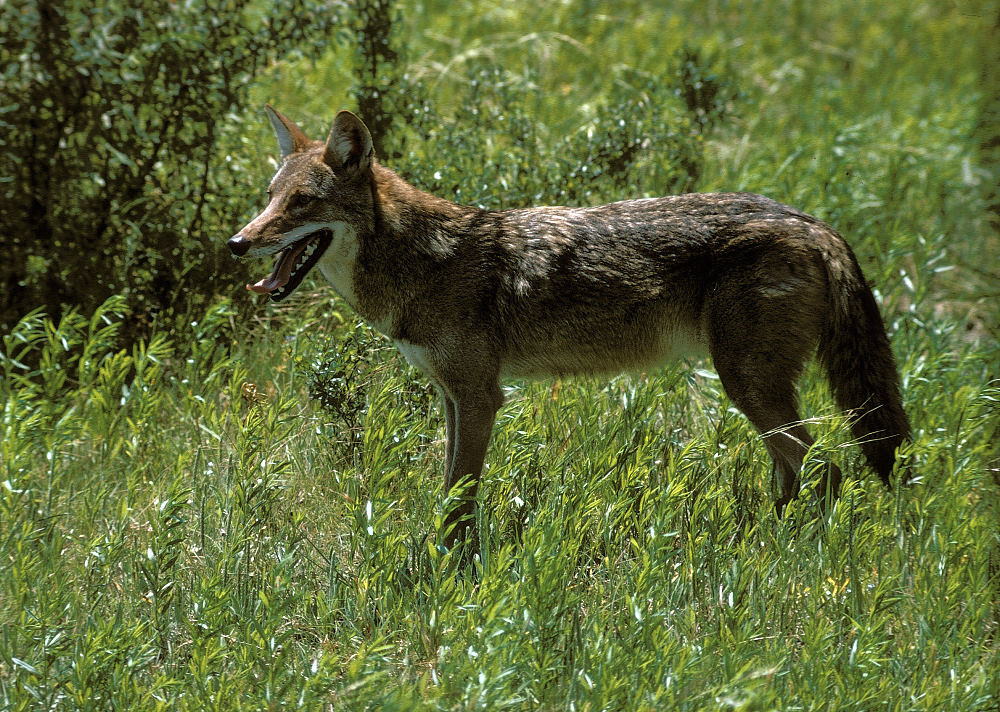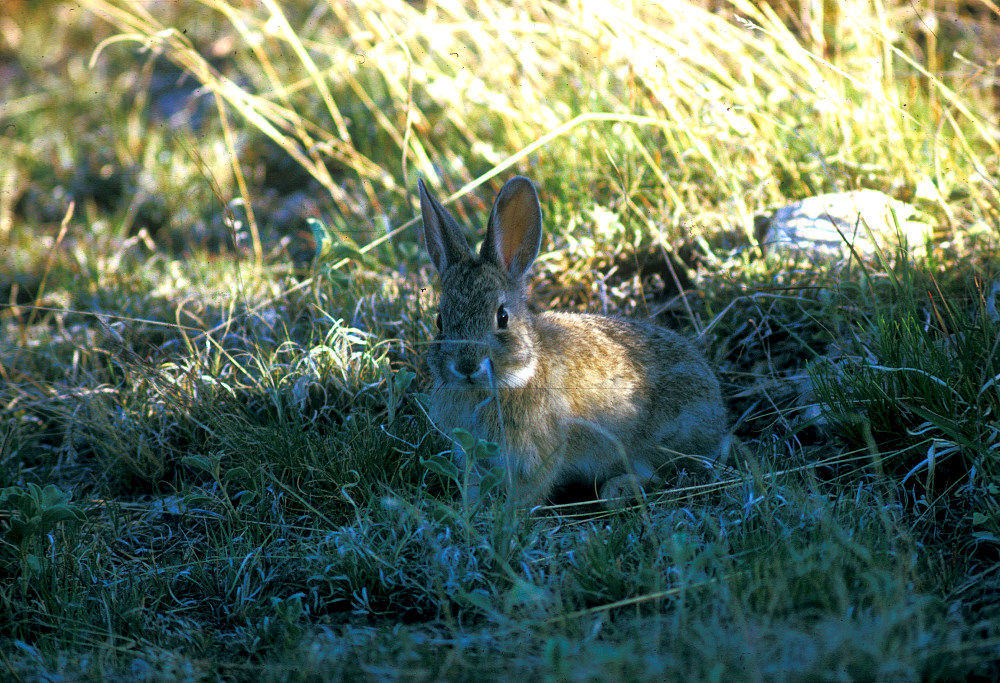Small-to-Medium-Sized Mammals
Native people of the prairies and marshlands consumed a wide variety of small- to medium-sized mammals including rabbits, raccoons, opossums, and collared peccaries (javelina). Even the predators became the prey as natives exploited carnivores such as bobcats, foxes, and coyotes as protein sources. These animals provided not only food and fur but also “trophy” ornaments such as teeth and long bones. Coyote teeth from the Museum of the Coastal Bend had drill holes and were probably worn as an ornament or talisman.
Of the small mammals, rabbits probably contributed the most caloric bang for the buck. This food source was found throughout the region, and the energy expended procuring this source was rather minimal. Black-tailed Jackrabbits (Lepus californicus) can be found in the grasslands of the inner Coastal Plain, while marsh rabbits (Sylvilagus palustris) make their home in the marshlands and estuaries of the Gulf Coast. Hunter-gatherers would form large hunting bands and flush this elusive prey out of hiding. Cabeza de Vaca, who lived as a captive of coastal and south Texas Indians during the early 1500s, recounts in his journal the awesome spectacle of a rabbit hunt. Using a 24-inch club, natives would stand abreast making noise to flush rabbits from the underbrush. When an unfortunate rabbit bolted from hiding, it was encircled and beaten to death. Cabeza de Vaca also frequently refers to the abundance of rabbits offered to him and his men by the natives of the coast.
Other small mammals in the region include opossum (Didelphis marsupialis) and river otter (Lontra canadensis); remains of both were found at the Mitchell Ridge site (41GV66) near Galveston. Although relative newcomers to south Texas, remains of collared peccary, or javelina hog (Pecari tajacu) have been found in a few sites along the Texas coast. Javelina would have provided an ample source of protein and fur for native peoples. Remains found in a pre-Toyah (AD 1300-1600) context at the Swan Lake Site (41AS16) suggests javelina were present in Texas before the arrival of the Spanish.
Evidence that carnivores were exploited is found at the Guadalupe Bay Site (41CL2). While not attributing seriously to the diet of the natives, coyote (Canis latrans), red wolf (Canis rufus), domestic dog (Canis familiaris), and bobcat (Lynx rufus) were all recovered during excavations. The Callo del Oso Site (41NU2) also yields carnivores like bobcat and foxes. As indicated by grave goods, these powerful predators also served some sort of symbolic motive. Burial 1 from site 41WY50 contained two matched upper incisors of a coyote and 18 canis molars. At the Mitchell Ridge molars of both dog and coyote were found.

|

|
